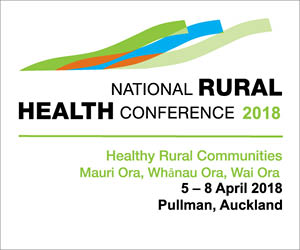Frontline health workers can help victims of “modern slavery”, researchers say.
While many of us might think of slavery as a tragedy of a bygone area, a group of experts writing in the New Zealand Medical Journal today say a hidden modern slavery problem persists today.
This includes forced, underage and servile forms of marriage, and worker exploitation.
The International Labour Organisation estimates there are nearly 21 million victims of slavery worldwide, and while there were no specific figures for New Zealand, our country was first described by a 2004 US report as a destination country for people trafficked for sexual exploitation.
The new paper’s authors highlight many other examples, including migrant fishers and horticulture workers promised well-paying jobs and work permits – with one Fijian earning as little as $25 for three weeks’ work.
Now, they say, our doctors and health workers are in a unique position to help and advocate for them.
“Slavery has serious health consequences, but is a mostly neglected issue within the health system,” said lead author Dr Paula King, a public health physician and Otago University clinical research fellow.
“Victims are at increased risk of acute and chronic physical and mental health problems, injuries from dangerous living or working conditions, or physical or sexual abuse, so they are likely to come into contact with health workers.
“We know that health workers may have had contact with people in situations of slavery, but may not have had the knowledge, resources or skills to identify victims and offer effective help.”
Examples of scenarios that should ring alarm bells for health workers include migrant workers with “workplace injuries” accompanied by a “superior” who insists on rushing treatment to get them back to work.
Another case might be an infectious outbreak where it was found workers were living together in crowded conditions.
Victims may go to the doctor for routine care, but show telltale signs of exploitation such as unexplained injuries, contradictions in their stories and behaviour, not knowing their home address or lack of personal identification.
Co-author Dr Christina Stringer of the University of Auckland’s Business School published a report last year revealing the exploitation of migrant and New Zealand-born workers across many industries, including horticulture, hospitality and construction.
“One migrant we interviewed was beaten up in an orchard by his contractor, while another was physically assaulted and denied sufficient food; he ran away and was found sleeping on the streets in a distressed state,” Stringer said.
“There is also evidence of exploitation in the health and aged-care sectors themselves.”
More than 70 businesses were banned from hiring migrant workers for breaching labour laws in the last six months.
“Slavery is a violation of many human rights, including the right to health,” King said.
“Doctors and other health workers hold a privileged position in the health sector and can, and should be, leading advocates for change at government, health system and organisational levels to address slavery and its health consequences.
“A robust health response to slavery includes the ability to identify current victims or those at risk, and to treat them in a culturally competent and trauma-informed manner in collaboration with other services.”
Health workers could assist by making themselves more aware of the problem, linking up with groups working with migrants and refugees, and taking the lead in developing new guidelines and policy within their organisations and professional bodies.






















